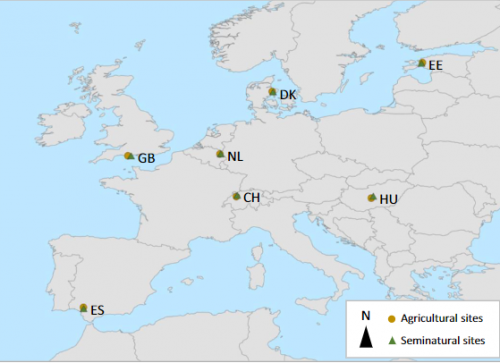A SHOWCASE-funded paper, written by project partners The Spanish National Research Council (CSIC), Agroscope, HUN-REN Centre for Ecological Research, University of Cadiz, University of Evora, University of Reading, Wageningen University and Research, Swedish University of Agriculture Sciences Agricultural, in collaboration with Aarhus University and Swiss Federal Institute for Technology (Eidgenössische Technische Hochschule) was recently published, highlighting the importance of semi-natural areas as genetic reservoirs for enhancing the resilience of agricultural ecosystems.
Agricultural landscapes cover over 80% of the world's land, making them crucial for conservation strategies by connecting protected areas and directly conserving various species. In light of high-intensity agriculture, which can halt conservation strategies, transitioning to lower-intensity agriculture and ecological intensification can help with species loss issues. So far, most studies have focused on species abundance, neglecting the genetic diversity that underpins long-term conservation.
To fill this research gap, this pan-European study examined gene flow between agricultural and semi-natural landscapes in two key insect species - the lady beetle Coccinella septempunctata and the bee pollinator Andrena flavipes. The study found that semi-natural areas act as genetic reservoirs for these types of pollinators, supporting larger and more genetically diverse populations. The results from the study show that there is asymmetric gene flow from seminatural to agricultural landscapes. The results provide insight that is relevant to the role of integrating natural habitats into agricultural landscapes to preserve ecosystem service-providing insects. These conclusions are also potentially beneficial for the shaping of future agricultural policies and management actions to restore and maintain semi natural habitats, emphasising their role in sustaining healthy insect populations and ensuring long-term ecosystem services.
Read the full paper here.
Image: Map showing the location of study sites in seven European countries, each including an agricultural (brown dots) and a nearby seminatural (green triangles) plot.
